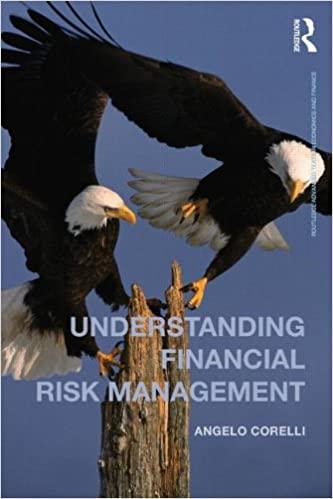What would be the future value of a $100 investment two years from now at a 10 percent annual 4) compound interest rate? a) $100 b) $110 c) $120 d) $121 5) What is the term for an arithmetic process whereby a future value decreases at a compound interest rate over time to reach a present value? a) Compounding b) Discounting c) Investing d) Speculating 6) What would be the present value of a $100 investment to be received one year from now at a 10 percent annual discount interest rate? a) $100 b) $95 c) $91 d) $83 7) How many variables are in the future value and present value equations? a) One b) Two c) Three d) Four 8) Which of the following is not a variable in the present value equation? a) Default risk b) Number of periods c) Future value d) Interest rate 9) What is a series of equal payments (or receipts) that occur over a number of time periods called? a) Annuity b) Reverse annuity Focus c) Simple interest problem d) Rule of 72 example 10) What is a series of equal payments (or receipts) that occur at the end of each time period called? a) Annuity due b) Ordinary annuity c) Reverse annuity d) Rule of 72 example 11) The future value of a $100 payment per year ordinary annuity at a 5 percent interest rate for two years would be which of the following? a) $100 b) $200 c) $205 d) $250 I 12) Assume you are the recipient of a two-year, 5 percent, $100 per year ordinary annuity. What is the present value of the amount to be received at the end of the first year? a) $105 b) $100 c) $95 d) $90 13) Assume you are the recipient of a two-year, 5 percent, $100 per year annuity. If this is an annuity due instead of an ordinary annuity, what would be the present value of the first receipt? a) $100 b) $95 c) $186 d) $200 14) Which of the following variables is unique to solving annuity problems? a) Future value b) Interest rate c) Number of periods d) Payment 15) Assume you are the recipient of a two-year, $100 per year, ordinary annuity that has a future value of $207. What is the interest rate on this annuity? a) 5 percent b) 7 percent c) 9 percent d) 10 percent 16) Assume that the future value of an ordinary annuity is $3,246, the annual payment is $1,000, and the interest rate is 8 percent. How many years will it take the $1,000 annual payments to grow to $3,246? a) 1year b) ears c) 5 years d) 7 years 17) What is a loan repaid in equal payments over a specified time period called? a) Simple interest loan b) Amortized loan c) Usury loan d) All of the choices are correct. 18) For an amortized loan, the period payment contains an interest payment portion that a) Stays constant over the life of the loan b) Increases over the life of the loan c) Decreases over the life of the loan d) First increases and then decreases over the life of the loan 19) What would be the annual periodic payments for an ordinary annuity, with a 10 percent compound interest rate, that will have a future value of $1,000 three years from now? a) $285 b) $302 c) $333 d) $350 20) if you wish to compound or discount quarterly (four times a year), for a period of five years, what would be the number of periodic payments (or receipts)? a) Five b) Ten c) Fifteen d) Twenty 21) The act of lending money at an excessively high interest rate is called? a) Usury Focus 19) What would be the annual periodic payments for an ordinary annuity, with a 10 percent compound interest rate, that will have a future value of $1,000 three years from now? a) $285 b) $302 c) $333 d) $350 20) If you wish to compound or discount quarterly (four times a year), for a period of five years, what would be the number of periodic payments (or receipts)? a) Five b) Ten c) Fifteen d) Twenty 21) The act of lending money at an excessively high interest rate is called? a) Usury b) Compounding c) Discounting d) Making a fair return 22) If the annual percentage rate is 12 percent based on 6 percent interest charged every six months, what will the effective annual rate be? a) 12 percent b) 12.22 percent c) 12.36 percent d) 12.60 percent 23) For which type of annuity do equal periodic payments (or receipts) occur at the beginning of each period? a) Ordinary annuity b) Annuity due c) Reverse annuity d) Annuity rule 24) What would be the future value of an annuity due, two-year investment with a 10 percent interest rate and $100 annual payments? a) $200 b) $210 c) $220 d) $231 25) What would be the present value of an annuity due, three-year investment with a 10 percent interest rate and $100 annual payments? a) $300 b) $274 c) $249 d) $225










